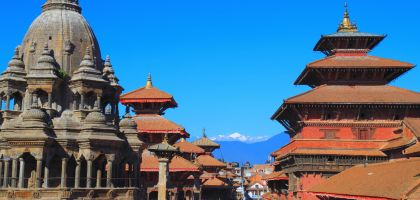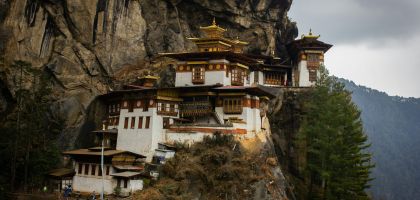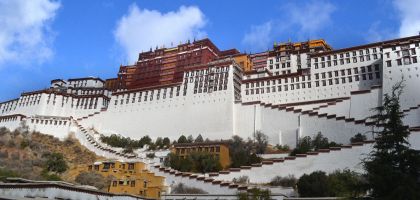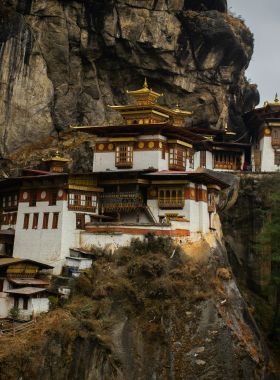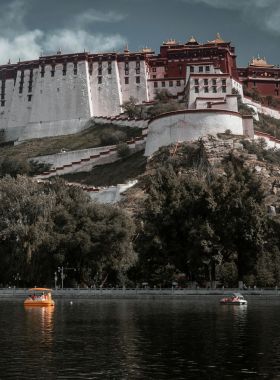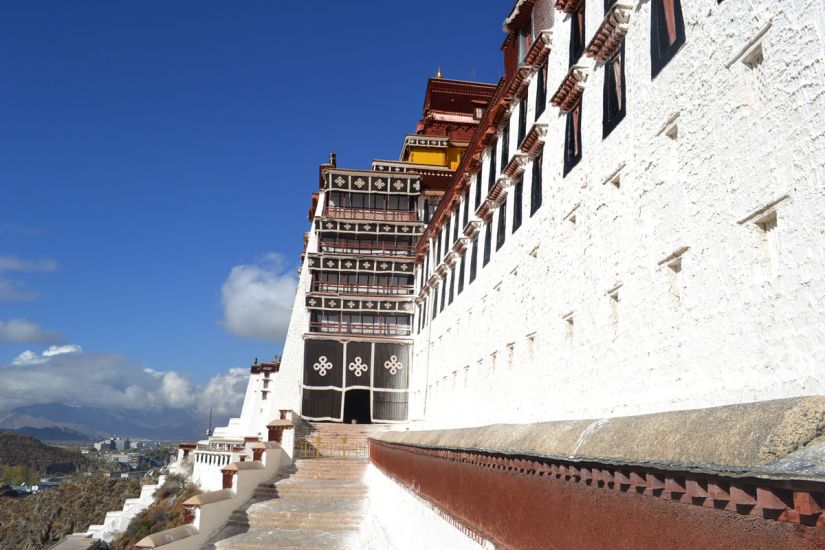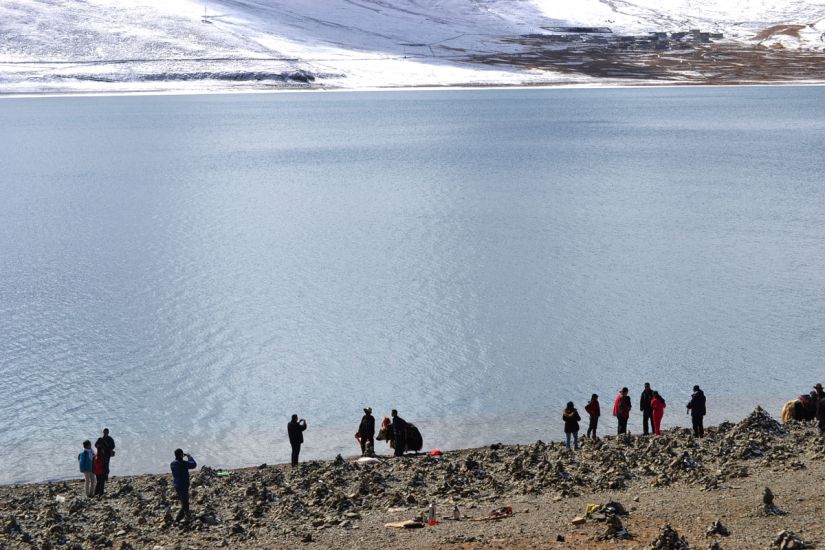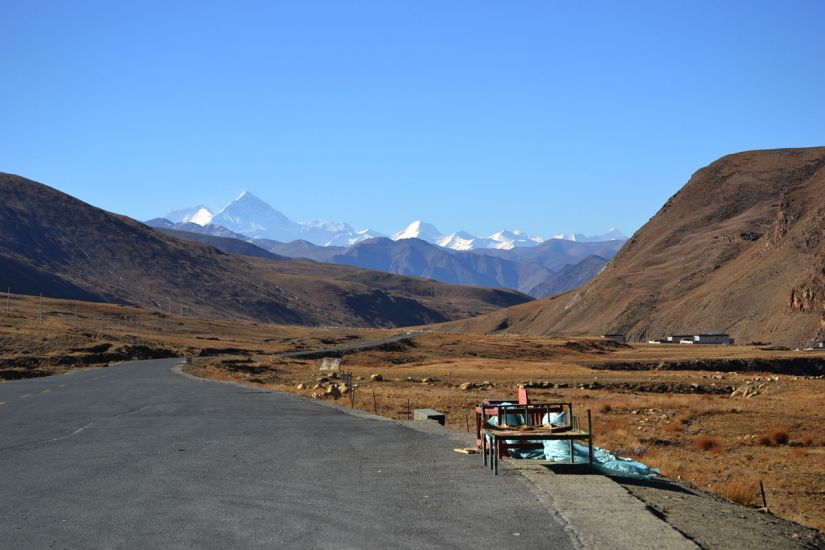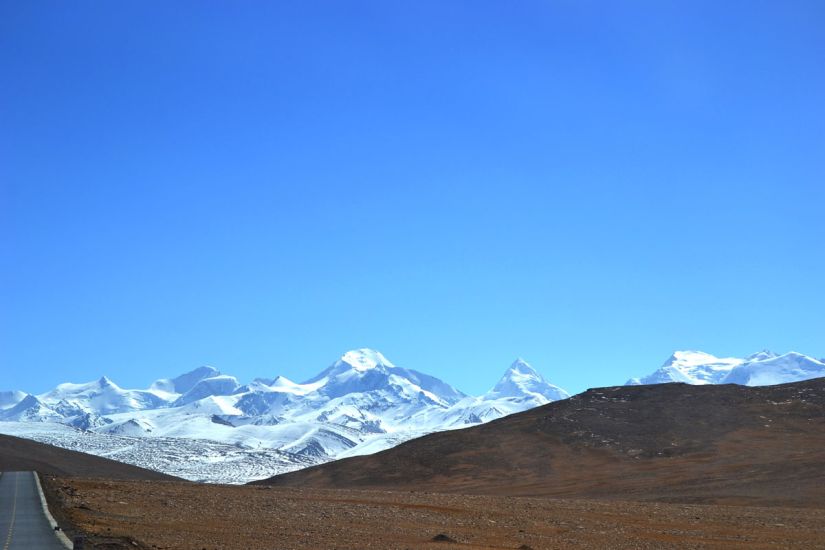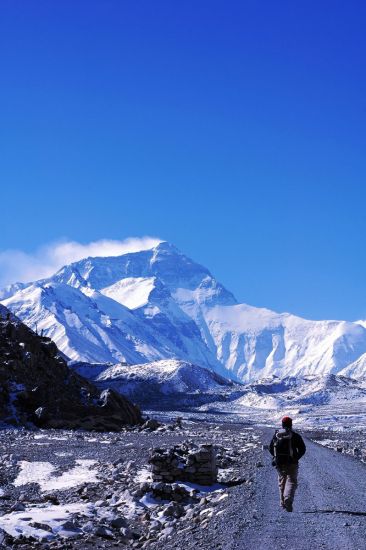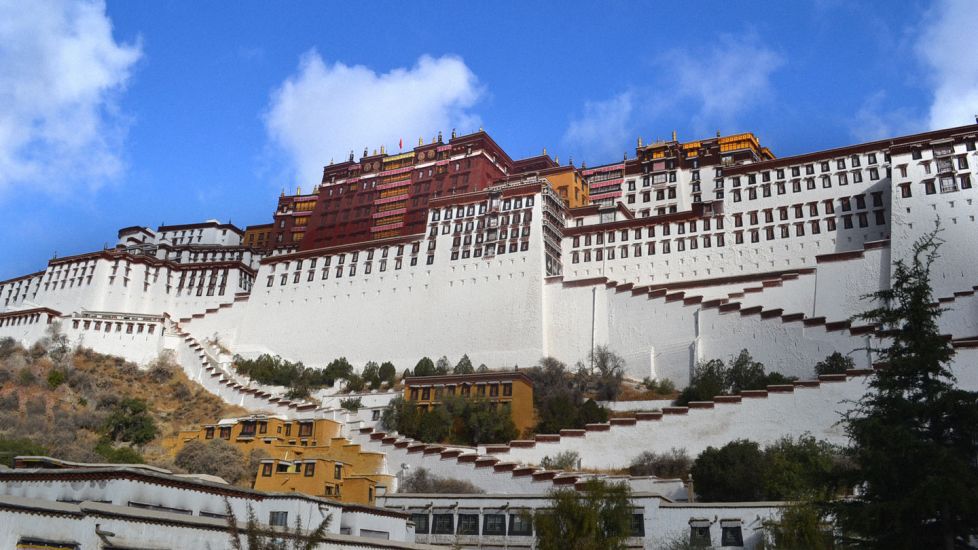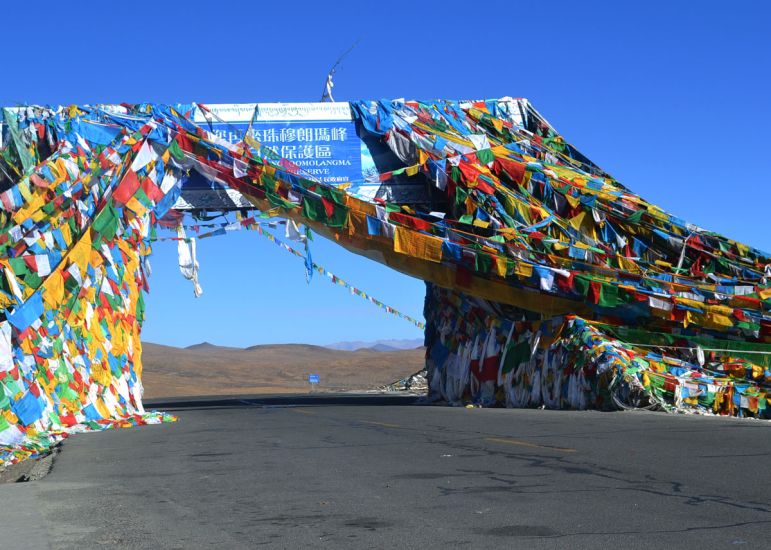Lhasa, Everest & Kailash Tour
13 Days / Tibet
Activity
Difficulty Level
Destinations
Trip Start / End
Max Altitude
Accommodation
Travel Style
Best time to travel
Personalized Travel Advice

Dev Raj Nepal
+977 9851096523
Detailed Itinerary
01
DAY
01
Touch down at Gonggar Airport, where the crisp Himalayan air greets you with a whisper of adventure. From the airport, you will take a scenic drive toward Lhasa, the spiritual and cultural capital of Tibet. The journey offers your first glimpses of the vast Tibetan Plateau, with rugged mountains standing like silent sentinels along the way. Upon reaching Lhasa, check into your hotel where you can unwind and allow your body to adjust to the high-altitude environment. Today is about taking it slow, hydrating well, and embracing the peaceful rhythm of Tibet. The city, sitting at 3,650m (11,975ft), pulses with a deep spiritual energy, but for now, rest is the priority. Tomorrow, the wonders of Lhasa await.
Arrival in Lhasa
Touch down at Gonggar Airport, where the crisp Himalayan air greets you with a whisper of adventure. From the airport, you will take a scenic drive toward Lhasa, the spiritual and cultural capital of Tibet. The journey offers your first glimpses of the vast Tibetan Plateau, with rugged mountains standing like silent sentinels along the way. Upon reaching Lhasa, check into your hotel where you can unwind and allow your body to adjust to the high-altitude environment. Today is about taking it slow, hydrating well, and embracing the peaceful rhythm of Tibet. The city, sitting at 3,650m (11,975ft), pulses with a deep spiritual energy, but for now, rest is the priority. Tomorrow, the wonders of Lhasa await.
02
DAY
02
Today, prepare to stand in the presence of one of Tibet’s most awe-inspiring structures—the Potala Palace. This grand fortress, with its towering white and red walls, once served as the winter residence of the Dalai Lama and remains a beacon of Tibetan identity. Step inside, where golden stupas, intricate murals, and vast halls tell stories of Tibet’s spiritual and political past. From the palace’s heights, the city stretches beneath you, a stunning contrast of ancient devotion and modern life.Next, visit Sera Monastery, one of Tibet’s last remaining Gelugpa (Yellow Hat Sect) monasteries. If timing allows, witness the famous monk debates, where young scholars engage in animated philosophical discussions—clapping their hands and making grand gestures as they challenge each other’s understanding of Buddhist doctrine.Conclude your day at Norbulingka, a serene retreat that once served as the summer palace of the Dalai Lama. Stroll through its beautifully manicured gardens and tranquil courtyards, where Tibetan rulers once sought solace away from the affairs of state. As the day winds down, return to your hotel, your mind filled with visions of Tibet’s grand history and spiritual depth.
Lhasa Exploration
Today, prepare to stand in the presence of one of Tibet’s most awe-inspiring structures—the Potala Palace. This grand fortress, with its towering white and red walls, once served as the winter residence of the Dalai Lama and remains a beacon of Tibetan identity. Step inside, where golden stupas, intricate murals, and vast halls tell stories of Tibet’s spiritual and political past. From the palace’s heights, the city stretches beneath you, a stunning contrast of ancient devotion and modern life.Next, visit Sera Monastery, one of Tibet’s last remaining Gelugpa (Yellow Hat Sect) monasteries. If timing allows, witness the famous monk debates, where young scholars engage in animated philosophical discussions—clapping their hands and making grand gestures as they challenge each other’s understanding of Buddhist doctrine.Conclude your day at Norbulingka, a serene retreat that once served as the summer palace of the Dalai Lama. Stroll through its beautifully manicured gardens and tranquil courtyards, where Tibetan rulers once sought solace away from the affairs of state. As the day winds down, return to your hotel, your mind filled with visions of Tibet’s grand history and spiritual depth.
03
DAY
03
Your morning begins at Drepung Monastery, once the largest monastery in Tibet and a majorcent0er of learning. Walk through its massive courtyards, where generations of monks have gathered for study and meditation. Its whitewashed walls cling to the mountainside, offering spectacular views of the surrounding valley.Next, step into the sacred heart of Tibetan Buddhism—the Jokhang Temple. Pilgrims from all corners of Tibet prostrate themselves at its entrance, their devotion etched into the very stones of the temple floor. Inside, flickering butter lamps illuminate ancient statues, including the revered Jowo Shakyamuni, a golden statue believed to be one of the most sacred relics in Tibet.Outside the temple, Barkhor Street beckons—a lively marketplace and sacred pilgrimage route inone. Join the throng of pilgrims spinning prayer wheels as they circumambulate the Jokhang, then explore the market’s stalls, where vendors sell prayer beads, traditional thangka paintings, and Tibetan handicrafts. Absorb the sights, sounds, and energy of this bustling center before retiring toyour hotel for the night.
Lhasa Exploration
Your morning begins at Drepung Monastery, once the largest monastery in Tibet and a majorcent0er of learning. Walk through its massive courtyards, where generations of monks have gathered for study and meditation. Its whitewashed walls cling to the mountainside, offering spectacular views of the surrounding valley.Next, step into the sacred heart of Tibetan Buddhism—the Jokhang Temple. Pilgrims from all corners of Tibet prostrate themselves at its entrance, their devotion etched into the very stones of the temple floor. Inside, flickering butter lamps illuminate ancient statues, including the revered Jowo Shakyamuni, a golden statue believed to be one of the most sacred relics in Tibet.Outside the temple, Barkhor Street beckons—a lively marketplace and sacred pilgrimage route inone. Join the throng of pilgrims spinning prayer wheels as they circumambulate the Jokhang, then explore the market’s stalls, where vendors sell prayer beads, traditional thangka paintings, and Tibetan handicrafts. Absorb the sights, sounds, and energy of this bustling center before retiring toyour hotel for the night.
04
DAY
04
Depart from Lhasa and drive toward Shigatse, Tibet’s second-largest city. En route, stop at Yamdrok Lake, one of Tibet’s three sacred lakes, with its striking turquoise waters. Continue over Karo La Pass (5,036m), where you will witness breathtaking glacier views. Upon reaching Gyantse, visit the Kumbum Stupa, a remarkable tiered structure adorned with intricate murals. Later, proceed to Shigatse and check into your hotel. Overnight in Shigatse.
Lhasa – Gyantse – Shigatse
Depart from Lhasa and drive toward Shigatse, Tibet’s second-largest city. En route, stop at Yamdrok Lake, one of Tibet’s three sacred lakes, with its striking turquoise waters. Continue over Karo La Pass (5,036m), where you will witness breathtaking glacier views. Upon reaching Gyantse, visit the Kumbum Stupa, a remarkable tiered structure adorned with intricate murals. Later, proceed to Shigatse and check into your hotel. Overnight in Shigatse.
05
DAY
05
In the morning, visit Tashilhunpo Monastery, the traditional seat of the Panchen Lama, before beginning the scenic drive towards Everest Base Camp (EBC). The journey takes you through rugged landscapes and high mountain passes, eventually reaching Rongbuk Monastery, the highest monastery in the world. From here, enjoy an unforgettable sunset view of Mount Everest. Overnight at a guesthouse near EBC.
Shigatse – Everest Base Camp
In the morning, visit Tashilhunpo Monastery, the traditional seat of the Panchen Lama, before beginning the scenic drive towards Everest Base Camp (EBC). The journey takes you through rugged landscapes and high mountain passes, eventually reaching Rongbuk Monastery, the highest monastery in the world. From here, enjoy an unforgettable sunset view of Mount Everest. Overnight at a guesthouse near EBC.
06
DAY
06
Wake up early to witness the first light of dawn painting Mount Everest in hues of pink and gold. After breakfast, visit Rongbuk Monastery, the highest-altitude monastery in the world at 5,154 meters, offering a final glimpse of Everest before continuing your journey westward. Travel across the vast Ngari Plateau, a remote region of Tibet known for its dramatic landscapes of grasslands, shimmering lakes, and snow-capped peaks. Along the way, enjoy stunning views of Mount Shishapangma (8,027m), the only 8,000-meter peak entirely within Tibet. You’ll also pass by Peiku Tso, a picturesque lake reflecting the towering peaks of Shishapangma in its tranquil waters. After crossing the open grasslands surrounding Peiku Tso, arrive in Saga County, a key transit hub for travelers heading toward Mount Kailash and Lake Manasarovar. This marks the beginning of your journey into Tibet’s sacred western region. If you need last-minute essentials for the Kailash trek, Saga is the best place to stock up. Overnight in Saga.
Everest Base Camp – Peiku Tso – Saga
Wake up early to witness the first light of dawn painting Mount Everest in hues of pink and gold. After breakfast, visit Rongbuk Monastery, the highest-altitude monastery in the world at 5,154 meters, offering a final glimpse of Everest before continuing your journey westward. Travel across the vast Ngari Plateau, a remote region of Tibet known for its dramatic landscapes of grasslands, shimmering lakes, and snow-capped peaks. Along the way, enjoy stunning views of Mount Shishapangma (8,027m), the only 8,000-meter peak entirely within Tibet. You’ll also pass by Peiku Tso, a picturesque lake reflecting the towering peaks of Shishapangma in its tranquil waters. After crossing the open grasslands surrounding Peiku Tso, arrive in Saga County, a key transit hub for travelers heading toward Mount Kailash and Lake Manasarovar. This marks the beginning of your journey into Tibet’s sacred western region. If you need last-minute essentials for the Kailash trek, Saga is the best place to stock up. Overnight in Saga.
07
DAY
07
After breakfast, set off on an unforgettable journey through the Saga Valley, nestled between the towering Himalayan and Gangdise mountain ranges. The route unfolds with breathtaking scenery—endless rolling grasslands, shimmering lakes, and an unbroken stretch of snow-capped peaks. As you travel, keep an eye out for herds of yaks and sheep grazing peacefully beneath the towering mountains. Along the way, you’ll pass Gongzhucuo Lake, a striking emerald-green body of water that adds to the valley’s natural beauty. The road gradually ascends to Mayum La Pass (5,211m), a high-altitude gateway leading into Tibet’s mystical Ngari Region. The landscape transforms into a rugged, untamed wilderness, home to diverse wildlife. Just beyond the pass, the first glimpse of Lake Manasarovar appears, its sacred waters stretching toward the horizon with Mount Kailash standing proudly in the background—an awe-inspiring sight for travelers and pilgrims alike. Continuing along the lakeshore, the journey brings you to Darchen, the gateway to the revered Mount Kailash pilgrimage. Upon arrival, check into your accommodation, rest, and make final preparations for the challenging yet spiritually rewarding Kailash kora in the days ahead. Overnight in Darchen.
Saga – Lake Manasarovar – Darchen
After breakfast, set off on an unforgettable journey through the Saga Valley, nestled between the towering Himalayan and Gangdise mountain ranges. The route unfolds with breathtaking scenery—endless rolling grasslands, shimmering lakes, and an unbroken stretch of snow-capped peaks. As you travel, keep an eye out for herds of yaks and sheep grazing peacefully beneath the towering mountains. Along the way, you’ll pass Gongzhucuo Lake, a striking emerald-green body of water that adds to the valley’s natural beauty. The road gradually ascends to Mayum La Pass (5,211m), a high-altitude gateway leading into Tibet’s mystical Ngari Region. The landscape transforms into a rugged, untamed wilderness, home to diverse wildlife. Just beyond the pass, the first glimpse of Lake Manasarovar appears, its sacred waters stretching toward the horizon with Mount Kailash standing proudly in the background—an awe-inspiring sight for travelers and pilgrims alike. Continuing along the lakeshore, the journey brings you to Darchen, the gateway to the revered Mount Kailash pilgrimage. Upon arrival, check into your accommodation, rest, and make final preparations for the challenging yet spiritually rewarding Kailash kora in the days ahead. Overnight in Darchen.
08
DAY
08
Today, we will take a drive to Darchen from where we start the first day of the Kailash Kora trek. The journey takes us across stunning landscapes, passing through rocky terrain and valleys, with the majestic Mount Kailash looming ahead. Our first day of trekking is relatively moderate, with an ascent towards Shiva’s Temple (Yam Dwar), the first stop of the Kora. Along the way, you’ll pass through sacred sites where pilgrims stop to pray and reflect. These sites hold immense spiritual value, and many pilgrims walk barefoot as an expression of devotion. The route is marked by a series of stone markers, prayer flags, and sacred stones that dot the path, further enhancing the spiritual ambiance of the journey. Throughout the day, we’ll be surrounded by the breathtaking views of Mount Kailash, which rises majestically at an altitude of 6,638 meters, and the ever-present quietude of the Tibetan Plateau. The journey is not just physical, but also a deeply spiritual one, where the tranquility of the environment and the significance of the mountain provide a unique opportunity for reflection and connection. At the end of the day’s trek, we will rest at Dirapuk, one of the camps along the route. This serene spot offers a close-up view of Mount Kailash, allowing for further reflection before continuing the Kora the next day. The night will be spent under the vast Tibetan sky, preparing for the challenges and spiritual rewards of the next day’s trek.
Darchen to Dirapuk Trek
Today, we will take a drive to Darchen from where we start the first day of the Kailash Kora trek. The journey takes us across stunning landscapes, passing through rocky terrain and valleys, with the majestic Mount Kailash looming ahead. Our first day of trekking is relatively moderate, with an ascent towards Shiva’s Temple (Yam Dwar), the first stop of the Kora. Along the way, you’ll pass through sacred sites where pilgrims stop to pray and reflect. These sites hold immense spiritual value, and many pilgrims walk barefoot as an expression of devotion. The route is marked by a series of stone markers, prayer flags, and sacred stones that dot the path, further enhancing the spiritual ambiance of the journey. Throughout the day, we’ll be surrounded by the breathtaking views of Mount Kailash, which rises majestically at an altitude of 6,638 meters, and the ever-present quietude of the Tibetan Plateau. The journey is not just physical, but also a deeply spiritual one, where the tranquility of the environment and the significance of the mountain provide a unique opportunity for reflection and connection. At the end of the day’s trek, we will rest at Dirapuk, one of the camps along the route. This serene spot offers a close-up view of Mount Kailash, allowing for further reflection before continuing the Kora the next day. The night will be spent under the vast Tibetan sky, preparing for the challenges and spiritual rewards of the next day’s trek.
09
DAY
09
In the morning, we continue our trek with an 18km journey from Dirapuk to Zutulpuk, a section known as the outer kora. This stretch is considered challenging, with a demanding ascent leading up to Dolma La Pass at 5,613m, the highest point of the trek. The climb is strenuous but rewarding, offering breathtaking views of the surrounding landscapes. From Dolma La, the trail descends steeply toward Gauri Kunda, a sacred lake revered by pilgrims. Along the way, you’ll be treated to awe-inspiring vistas of Mount Kailash, adding to the spiritual and scenic allure of the trek. By late afternoon, we arrive at Zutulpuk (4,760m), where we spend the night at a guesthouse, resting for the final leg of the journey.
Dirapuk to Zutulpuk Trek via Dolma-La Pass
In the morning, we continue our trek with an 18km journey from Dirapuk to Zutulpuk, a section known as the outer kora. This stretch is considered challenging, with a demanding ascent leading up to Dolma La Pass at 5,613m, the highest point of the trek. The climb is strenuous but rewarding, offering breathtaking views of the surrounding landscapes. From Dolma La, the trail descends steeply toward Gauri Kunda, a sacred lake revered by pilgrims. Along the way, you’ll be treated to awe-inspiring vistas of Mount Kailash, adding to the spiritual and scenic allure of the trek. By late afternoon, we arrive at Zutulpuk (4,760m), where we spend the night at a guesthouse, resting for the final leg of the journey.
10
DAY
10
On the final leg of the Kailash Kora, begin your journey back to Darchen from Zutulpuk, retracing your steps along the sacred path. If you’re feeling fatigued from the trek, a sightseeing bus is available to take you back to Darchen, marking the end of your pilgrimage around Mount Kailash. This is a moment of reflection, having completed one of the most sacred circuits in Tibetan Buddhism. In the afternoon, we’ll make our way to the serene and holy Lake Manasarovar, a place of great spiritual significance. Spend time soaking in the peaceful atmosphere of the lake, known for it’s crystal-clear waters and surrounding mountain views. At this sacred lake, you’ll have the opportunity to engage in various spiritual activities. You can trek around the lakeshore, drink from its holy waters, or cleanse yourself in the lake’s sacred depths. Many pilgrims perform their own religious rituals, offering prayers or simply taking a moment of quiet contemplation beside the tranquil waters. Return to Darchen in the evening, completing your pilgrimage to the sacred Mount Kailash and Lake Manasarovar.
Zutulpuk to Darchen Trek
On the final leg of the Kailash Kora, begin your journey back to Darchen from Zutulpuk, retracing your steps along the sacred path. If you’re feeling fatigued from the trek, a sightseeing bus is available to take you back to Darchen, marking the end of your pilgrimage around Mount Kailash. This is a moment of reflection, having completed one of the most sacred circuits in Tibetan Buddhism. In the afternoon, we’ll make our way to the serene and holy Lake Manasarovar, a place of great spiritual significance. Spend time soaking in the peaceful atmosphere of the lake, known for it’s crystal-clear waters and surrounding mountain views. At this sacred lake, you’ll have the opportunity to engage in various spiritual activities. You can trek around the lakeshore, drink from its holy waters, or cleanse yourself in the lake’s sacred depths. Many pilgrims perform their own religious rituals, offering prayers or simply taking a moment of quiet contemplation beside the tranquil waters. Return to Darchen in the evening, completing your pilgrimage to the sacred Mount Kailash and Lake Manasarovar.
11
DAY
11
After completing the sacred journey around Mount Kailash and visiting the holy Lake Manasarovar, we retrace our step back through the rugged beauty of the Ali Plateau, offering stunning views of distant mountains, expansive grasslands, and peaceful Tibetan villages. The route provides a final opportunity to immerse yourself in the quiet beauty of the Tibetan wilderness, with the peaks of the Himalayas and Gangdise Mountains in the distance. Arrive in Saga by evening, where you can rest and reflect on the incredible adventure.
Darchen – Saga
After completing the sacred journey around Mount Kailash and visiting the holy Lake Manasarovar, we retrace our step back through the rugged beauty of the Ali Plateau, offering stunning views of distant mountains, expansive grasslands, and peaceful Tibetan villages. The route provides a final opportunity to immerse yourself in the quiet beauty of the Tibetan wilderness, with the peaks of the Himalayas and Gangdise Mountains in the distance. Arrive in Saga by evening, where you can rest and reflect on the incredible adventure.
12
DAY
12
Today, we leave Saga and embark on a scenic drive towards Kyirong, the border town between Tibet and Nepal. Covering a long distance, the journey takes around 6 to 7 hours, passing through breathtaking landscapes of the Tibetan Plateau. As we descend from the high-altitude terrain, the scenery gradually transforms, with arid landscapes giving way to lush greenery and deep valleys. Kyirong, situated at a lower altitude, is known for its mild climate and rich vegetation, offering a stark contrast to the vast plateaus of Tibet. Upon arrival in Kyirong, you’ll have time to explore the town, soak in the serene surroundings, and prepare for the border crossing into Nepal the next day. Overnight stay in Kyirong.
Saga – Kyirong
Today, we leave Saga and embark on a scenic drive towards Kyirong, the border town between Tibet and Nepal. Covering a long distance, the journey takes around 6 to 7 hours, passing through breathtaking landscapes of the Tibetan Plateau. As we descend from the high-altitude terrain, the scenery gradually transforms, with arid landscapes giving way to lush greenery and deep valleys. Kyirong, situated at a lower altitude, is known for its mild climate and rich vegetation, offering a stark contrast to the vast plateaus of Tibet. Upon arrival in Kyirong, you’ll have time to explore the town, soak in the serene surroundings, and prepare for the border crossing into Nepal the next day. Overnight stay in Kyirong.
13
DAY
13
After border formalities, drive from Kyirong to Kathmandu. The scenic drive descends from the Tibetan highlands into Nepal’s winding mountain roads. Upon arrival in Kathmandu, the tour concludes.
Kyirong – Kathmandu
After border formalities, drive from Kyirong to Kathmandu. The scenic drive descends from the Tibetan highlands into Nepal’s winding mountain roads. Upon arrival in Kathmandu, the tour concludes.
Includes / Excludes
Inclusions
-
Hotel, Guest House or Tented Accommodation as per program.
-
Private Transportation as per the group size.
-
All necessary Tibet Travel and Trekking permit.
-
One English speaking Tibetan Guide.
-
All Sightseeing and Entrance fee.
-
Tibet Group Visa
-
Meal mentioned in the itinerary
Exclusions
-
Travel and personal Expenses.
-
Sleeping bags and Mattress for the tent stay.
-
Insurance of any kind & Medical fee if Emergency.
-
Hiring porter/ horse.
-
Portable oxygen cylinders in of emergency.
-
Rescue and Evacuation Service
-
Any Additional cost due to Nature calamity and Unforeseen Circumstances and etc
Trip Info
The best time to visit Tibet is during the spring and autumn months, from April to June and September to October. These seasons offer the most favorable weather conditions, ensuring a comfortable and enjoyable journey.
Spring (April to June)
Spring in Tibet brings clear skies, mild temperatures, and stunning landscapes as the region begins to bloom with vibrant colors. This is the perfect time for sightseeing and outdoor activities, with the weather being ideal for exploring Tibet’s high-altitude wonders. The snow-capped mountains are particularly striking during these months.
Autumn (September to October)
Autumn is another excellent time to visit, as the temperatures remain pleasant and the landscapes are painted in golden hues. This season marks the harvest period, and the weather is perfect for trekking, photography, and visiting Tibet’s monasteries and sacred sites. The clear skies and crispair enhance the beauty of Tibet’s natural wonders.
Summer (July to August)
Though summer is a popular time to visit Tibet due to warmer temperatures, it coincides with themonsoon season. Expect occasional rainfall and cloudy weather, which can make some trekking routes less accessible. However, the lush, green landscapes and fewer tourists make it an appealing
option for some travelers.
FAQs
Personalized Travel Advice

Dev Raj Nepal
+977 9851096523
